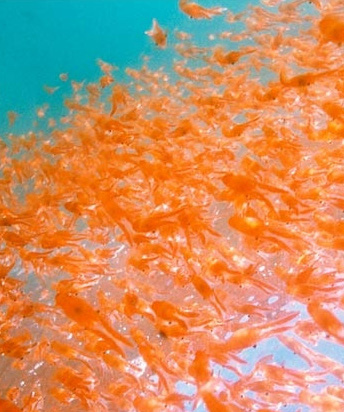Study sounding out krill counts
 Researchers in Tasmania are looking for a way to estimate krill populations based on sound.
Researchers in Tasmania are looking for a way to estimate krill populations based on sound.
Krill – a blanket term for about 85 species of open-ocean crustaceans known as euphausiids - are a vital source of food for a large array of Antarctic animals.
Scientists in Hobart have embarked on a research project using echo sounding technology to record the sound reflected from different-sized krill.
They hope it will help identify the 'sound signature' of individual krill and estimate the biomass of the giant communities they live in.
“What we're trying to do is figure out how much sound an individual animal, individual krill, actually reflects,” says Australian Antarctic Division (AAD) acoustician Dr Martin Cox.
“Now, the reason we're doing that is we can then use that to tell us how many krill, how much biomass is in the southern ocean.”
A giant tank equipped with echo sounders at AAD headquarters has been filled with over 8,000 Antarctic krill.
“When … [sound pulses] hit an object, such as krill, the energy is reflected back, amplified and illustrated on a digital display,” Dr Cox said.
Regular video cameras are pointed on the tank too.
“We can compare what we see with the camera, and what we see on the echo sounder,” Dr Cox said.
“Then we can take those signals and then we can figure out how much sound an individual krill is reflecting.”
Australia’s new icebreaker is equipped with similar echo sounding technology.
“So what we can do is take the signal from here, compare it to the signal we see from the ship as it's doing a survey, and calculate how much krill biomass is there,” Dr Cox said.
The data gathered in Hobart will be analysed and used in conjunction with data from vessels in Antarctic waters.
“At the moment the information we use is based on a precautionary approach,” said Dr Dirk Welsford from the Commission for the Conservation for Antarctic Marine Living Resources (CCAMLR), which regulates krill fishing in Antarctic waters.
“So, there's certainly the potential for this work, to change significantly our estimates of krill biomass.”







 Print
Print